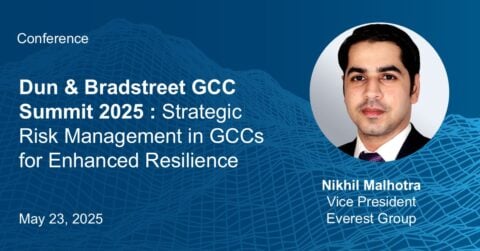Reimagine growth at Elevate – Dallas 2025. See the Agenda.
Filter
Displaying 11-20 of 309
Dun & Bradstreet GCC Summit 2025 | Conference
Friday, May 23
12:20 – 01:05 pm | IST
TAJ MG ROAD, BENGALURU
May 15, 2025
9:00 am CDT | 3:00 pm BST | 7:30 pm IST
Virtual Roundtable
1 hour 30 minutes
Nasscom GCC Summit 2025 | Empowering Growth as Strategic Partner
April 22 – April 23, 2025
HICC, Hyderabad
Scaling Smart: The Philippines as a Strategic GIC Hub
June 4, 2025
On-Demand LinkedIn Live
1 hour










